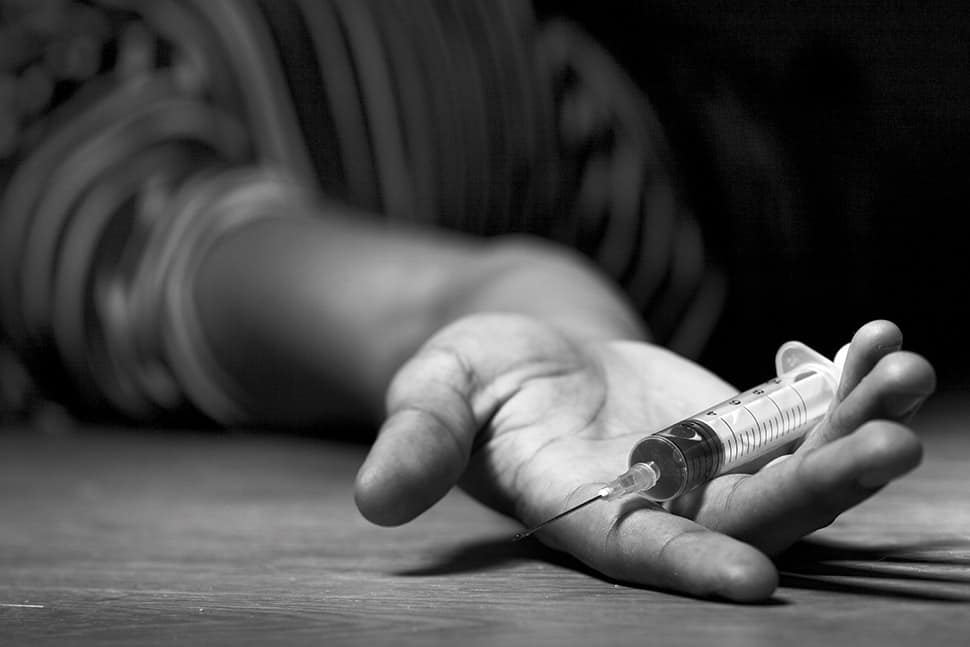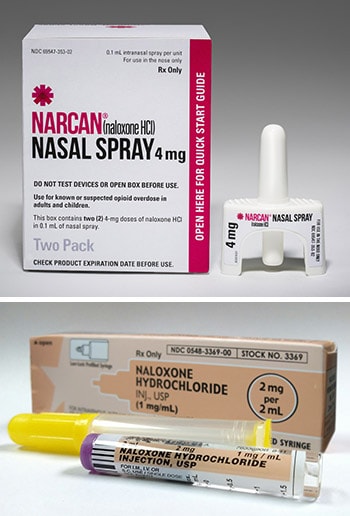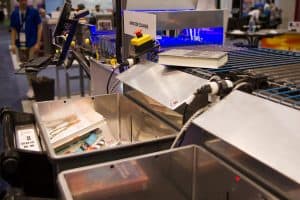
On June 1, the Philadelphia Inquirer broke the news that the Free Library of Philadelphia’s McPherson Square branch had a serious problem with opioid use among patrons. By June 3, everybody from the Washington Post to National Public Radio (NPR) had picked up the story.
“As this nation’s opioid crisis has exploded, the staff at the public library … have become first responders,” NPR’s Scott Simon told listeners. “And I gather the librarians there have been obliged to become involved in a way that—well, become involved in a way librarians aren’t usually asked to become involved.”
What Simon didn’t say—but what librarians far and wide know—is that the McPherson Square branch is just one of many American libraries struggling with opioid-related issues such as discarded, contaminated needles; drug use in the library itself; and even onsite overdoses and fatalities. Libraries from California to Colorado, Pennsylvania to Missouri, are finding themselves on the front lines of a battle they never anticipated fighting.
Of course, opiate use isn’t limited to libraries. Neither is anyone claiming that the problem is more severe in libraries than it is anywhere else. Still, the fact that libraries are open to all, offer relative anonymity, and generally allow patrons to stay as long as they like make them uniquely vulnerable to those seeking a place to use drugs.
“It’s just like: What is going on? How can we stem this tide?” says Kim Fender, director of the Public Library of Cincinnati and Hamilton County (PLCH).
A life at stake
In 2015, more Americans died from drug overdose than from car accidents and gun homicides combined, and more than six out of 10 of those overdoses involved an opioid. Preliminary data for 2016 suggests that drug overdose deaths for that year rose by about 19%—the largest annual increase the United States has ever seen.
Among the opioids used illegally are heroin; prescription pain medications such as oxycodone; fentanyl, a synthetic opioid 50–100 times more potent than morphine; and carfentanil, an elephant tranquilizer 10,000 times stronger than morphine.
Kitty Yancheff doesn’t know exactly which opiate caused the overdose of the patron she encountered in the Humboldt County (Calif.) Library in Eureka last year. She just knows that without her intervention, he would almost certainly have died.
After noticing a man at a table near the reference desk who seemed to be sleeping, Yancheff, the library’s public service division manager, tried to rouse him, first with words and then by banging on the table and his chair. “As I’m doing this, I noticed that he was sweating profusely, really dripping,” she tells AL. “He had mucus coming out of his nose, and his breathing was kind of gurgly, and his lips were blue, so I figured he was having an overdose.” (The World Health Organization states that an opiate overdose can be identified by three symptoms: pinpoint pupils, unconsciousness, and respiratory depression.)
As another staff member called 911, Yancheff grabbed a dose of Narcan, a drug that reverses the effects of opiate overdose, and administered it to the man via injection in his thigh, through his clothing. (The local public health department had recently given the library a supply of Narcan and trained staff in its use.) When he didn’t respond, she followed protocol by giving him a second dose, at which point his eyelids began to flutter. A few minutes later, the paramedics arrived. The man survived, though Yancheff hasn’t seen him since.
“It was surreal,” Yancheff says. “But I think to not have the Narcan, and sit idly by and watch someone die, would have been even worse.”
To stock Narcan, or not

It’s not clear how many libraries have joined Humboldt County Library in making Narcan available and training staff in its use. Among those who have is Denver Public Library’s Central Library, which began stocking Narcan earlier this year after a homeless patron overdosed and died in the library’s bathroom from a combination of heroin, methamphetamine, and other drugs.
The library bought 12 Narcan kits in February. By May, it had used seven of them.
“We have 13 staff members who are trained to use it—our two social workers and then 11 security staff,” explains Rachel Fewell, central library administrator. The library stocks a nasal-spray form of Narcan, rather than the injectable version. “It’s noninvasive, and there’s a clear protocol around it. It costs us $75 per kit. If you can save somebody’s life for $75, let’s do it.”
But what if Narcan is mistakenly administered to someone who hasn’t actually overdosed? “It’s not going to have any negative impact,” Fewell explains. “All it does is block opioids from hitting receptors in the brain, so even if you incorrectly use it on someone, there’s no negative side to it.” In addition, Narcan itself is not addictive, so libraries need not worry about any potential for abuse.
To the argument that administering Narcan falls outside the library’s mission, Fewell responds: “This is definitely scope creep for us, but we’re the de facto day shelter for Denver. If that’s how the city is going to see us, I’d rather my staff has tools to deal with it.”
Yancheff agrees. “Not stocking Narcan does not mean that that’s going to keep folks [who use opioids] away,” she points out. “Some people are concerned that if you stock it, they’re going to know they can come in there and overdose and know you’ll be able to revive them. Personally, I don’t believe that’s the case. I just see it as a resource similar to CPR, just another thing in our first-aid resource kit.”
While other libraries consider whether to stock Narcan, some are resorting to alternative strategies, many of which center on library restrooms.
Keeping restrooms safe for all
“It is unavoidable that people are going to use drugs in public bathrooms,” says Dr. Alex Walley, director of the Addiction Medicine Fellowship Program at Boston Medical Center and associate professor of medicine at Boston University School of Medicine. “The sooner that libraries accept that and try to prepare for it, the better off they’re going to be.”
Philadelphia’s McPherson branch has certainly accepted it. In May, after the branch experienced several overdoses, it began requiring patrons who wanted to use the bathroom to show identification.
“That proved to be too much for the circulation desk to keep track of,” says Judi Moore, the branch’s library supervisor and children’s librarian. So the library partnered with a local nonprofit, which now supplies volunteer bathroom monitors who sit by the bathroom door, take identification, and time people. If a person hasn’t emerged from the bathroom after five minutes, a security guard knocks on the door. Since the new rules have been implemented, no overdoses have occurred in the branch’s bathrooms.
PLCH has experienced an astonishing number of overdoses at the main library in the past year—about 50, or slightly fewer than one a week. As director Fender points out, that’s a relatively small number compared with the million-plus visits the branch gets each year, “but it’s still obviously a behavior we don’t want in any way to continue.”
Because the library is located close to a fire station, which is the first to respond to 911 calls of any nature, it has chosen not to stock Narcan, Fender says: “They can get here very, very quickly.” Instead, the library has taken measures such as having its 20-member security staff patrol bathrooms more often. “Just having people walking in certainly helps deter any kinds of behaviors someone might do in a bathroom that you wouldn’t want,” she says. “We had originally proposed closing off some of the restrooms, but building code requires a certain number of male and female toilets because of our occupancy.” If the tide of overdoses doesn’t ebb, she adds, the library will likely consider turning to Narcan.
What other strategies can libraries consider to discourage drug use in restrooms? In the past, some institutions have installed blue lights in bathrooms, with the idea that doing so makes it more difficult for users of intravenous drugs to find a vein to inject. According to Walley, the physician at Boston Medical, this strategy is unwise. “The worst-case scenario is that someone tries to use despite that lighting and hits an artery, so then there’s pulsing blood in the bathroom,” he says.
Instead, he recommends increasing bathroom monitoring, particularly for single-user bathrooms. One strategy is to keep it locked so that patrons have to ask for the key at the front desk. If the key hasn’t come back after a short period of time, a security guard or other worker can be dispatched to check the bathroom. Another is to install an intercom and require bathroom users to respond through it when checked on.
Steve Albrecht, a trainer and security consultant who has taught library security workshops for nearly 20 years, and who is the author of Library Security: Better Communication, Safer Facilities (ALA Editions, 2015), has another suggestion: “I like camera systems.” He’s not talking about video cameras in the bathroom itself, of course, but rather just outside it, along with signs noting that the area is under video surveillance. “Banks still get robbed even though they have cameras, but it’s a good deterrent,” he says.
Walley also recommends installing secure needle-disposal boxes in the bathroom. Otherwise, he says “people will put their needles down the toilet.” Indeed, Philadelphia’s McPherson branch was forced to close for a few days earlier this year after its bathroom pipes were clogged with needles. The branch has since installed sharps containers.
Meanwhile, Boston Public Library locations have had needle-disposal boxes in place for about two and a half years, ever since staff began noticing discarded needles on library property. “Staff are instructed to call the City of Boston’s Mobile Sharps Collection Team if needles are found or the boxes need to be emptied, and custodial staff have been trained on the proper disposal practices,” says Eamon Shelton, chief of operations.
If a bathroom is especially small, a library should make sure that its door opens outward rather than inward. “There have been cases where people have overdosed and fallen against the door and blocked the door so it can’t be opened,” Walley says. “I imagine most libraries are ADA-compliant, so you wouldn’t have that situation, but if you do, that’s relatively easy to fix.”
Hope on the horizon?
When and whether the opioid crisis will end is anything but clear. Preliminary data for 2017 indicates that the tide of drug deaths has yet to turn. Still, there are some signs of hope. The Federal Drug Administration recently asked drug company Endo Pharmaceuticals to take the powerful medication Opana ER off the market, a move interpreted by some as a sign that the agency is ramping up its efforts against the abuse of prescription opioids. Some states, including New York and Maryland, have passed legislation aimed at combating the crisis, such as by making Narcan more widely available, requiring physicians who prescribe opioids to prescribe the lowest effective dose, or allowing prosecutors to seek longer prison sentences for drug dealers who knowingly sell fentanyl. And the Centers for Disease Control and Prevention recently reported that the number of opioid prescriptions written by health care providers declined by 13.1% between 2012 and 2015.
But until the opioid war has been won, libraries will surely continue to find themselves on its front lines. As Fender says: “We’re all struggling together.”
Facts About Narcan
- Narcan is the brand name of a drug called naloxone, a medication that reverses the effects of opioid overdose by preventing the opioid from reaching the brain.
- If Narcan is given to someone who is not experiencing overdose, nothing will happen; there is no potential for harm. In addition, it is not possible to overdose on Narcan.
- Narcan is available both as an injection and as a nasal spray. It works within two to eight minutes.
- Libraries that stock Narcan typically administer it in conjunction with a call to professional emergency services (911).
- For more information on Narcan, visit naloxoneinfo.org or getnaloxonenow.org.



Oh, man.